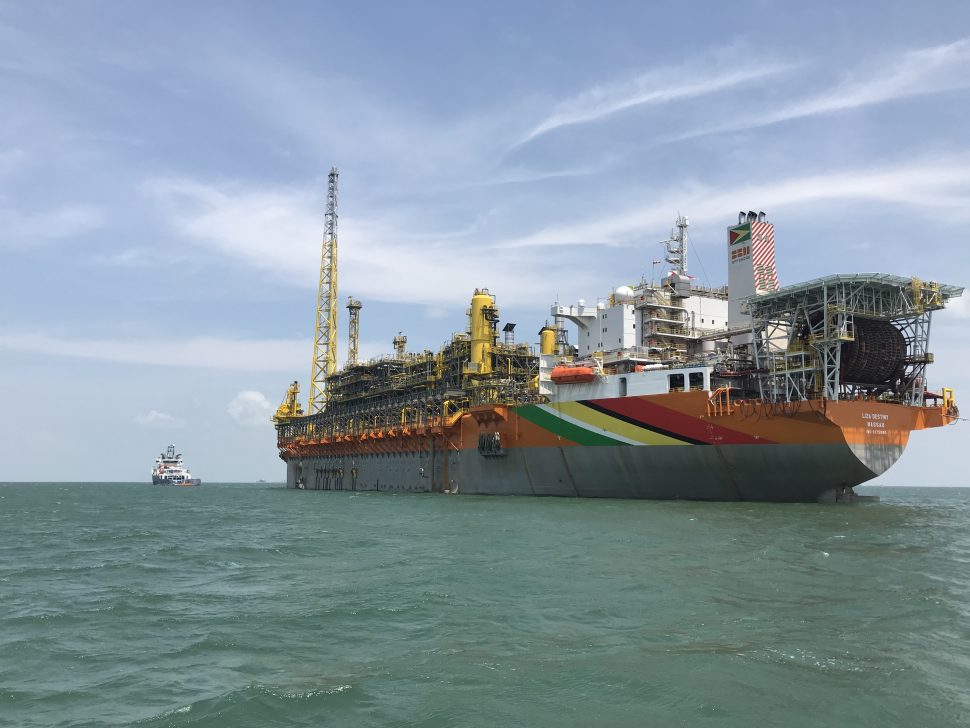Guyana has received US$35 million for the second of the five lifts of one million barrels of oil that it is entitled to this year, a figure that is about US$20 million less than what it received for its first cargo due to a drop world market prices.
“The Natural Resource Fund was yesterday credited with US$35,063,582.06. This represents payment by Shell Western Supply and Trading Limited for Guyana’s second lift,” the Ministry of Finance yesterday confirmed in a statement.
The Ministry of Finance said that the total holdings of the Natural Resources Fund as at June 11, 2020 is US$94,921,803.00.
While it is unclear the per barrel price that this country’s partners in the Stabroek Block—Esso Exploration Production Limited (EEPGL), CNOOC and Hess-received on their last lift, the US$35 per barrel price is the exact breakeven cost for the Liza Phase 1 project, according to Hess’ calculations.
Chief Executive Officer of the Hess Corporation John Hess in February had listed the breakeven cost for Liza Phase-1 at US$35/barrel. “The breakeven cost of the recently started giant offshore field in Guyana is currently $35/bl Brent and is set to fall further,” he had told the Argus Americas Crude Summit in Houston, Texas.
Guyana’s expected revenue from oil is projected to be lower due to the plummeting oil prices on the world market.
Guyana is entitled to five cargoes or five million barrels of oil this year as part of its profit share agreement with ExxonMobil and its partners, in addition to the 2 per cent royalty on all production in the Stabroek Block.
According to Article 11.2 of the Petroleum Agreement for the Stabroek Block, in any month during which crude is produced and sold, a maximum of 75 per cent of crude produced net of losses and operations can be allocated to permissible recoverable costs incurred by the contractor. This volume of crude is referred to as cost oil. The remaining crude is referred to as profit oil and is to be split equally between the contractor and government.
The Department of Energy is responsible for overseeing the sale of the country’s share of oil and it has sold the first three cargoes to Shell Western Supply and Trading Limited and is now looking for a marketer for the other cargoes.
When it sold its first cargo in February of this year, it received US$55 million. Then in late May it received a deposit of US$4.9 million for royalties.
Department of Energy Director Dr. Mark Bynoe has said that royalties would be paid on gross production and had pointed to the Natural Resources Fund Act, which sets out the timeframe for payment and management. The payment is to be deposited one month after the first quarter of every year.
It was expected that Guyana would receive its third one million barrel crude cargo next month but at the current production level offshore, due to cuts from 80,000 barrels per day to 30,000 barrels per day because of flaring precautions, that timeframe would have to be adjusted. The current production level comes even as it was anticipated that by the middle of this month production would have reached Liza-1’s peak 120,000 barrels per day target.
Production at Liza-1 plummeted due to problems with its compressor equipment offshore and the company committing not to increase flaring above about 15 million cubic feet of natural gas per day.
ExxonMobil’s Government Affairs Advisor Deedra Moe has assured that the company was working fervently to fix problems with its compressor equipment offshore and said that the lessons learned will be applied to its next Floating Production Storage and Offloading vessel, as well as future projects.






